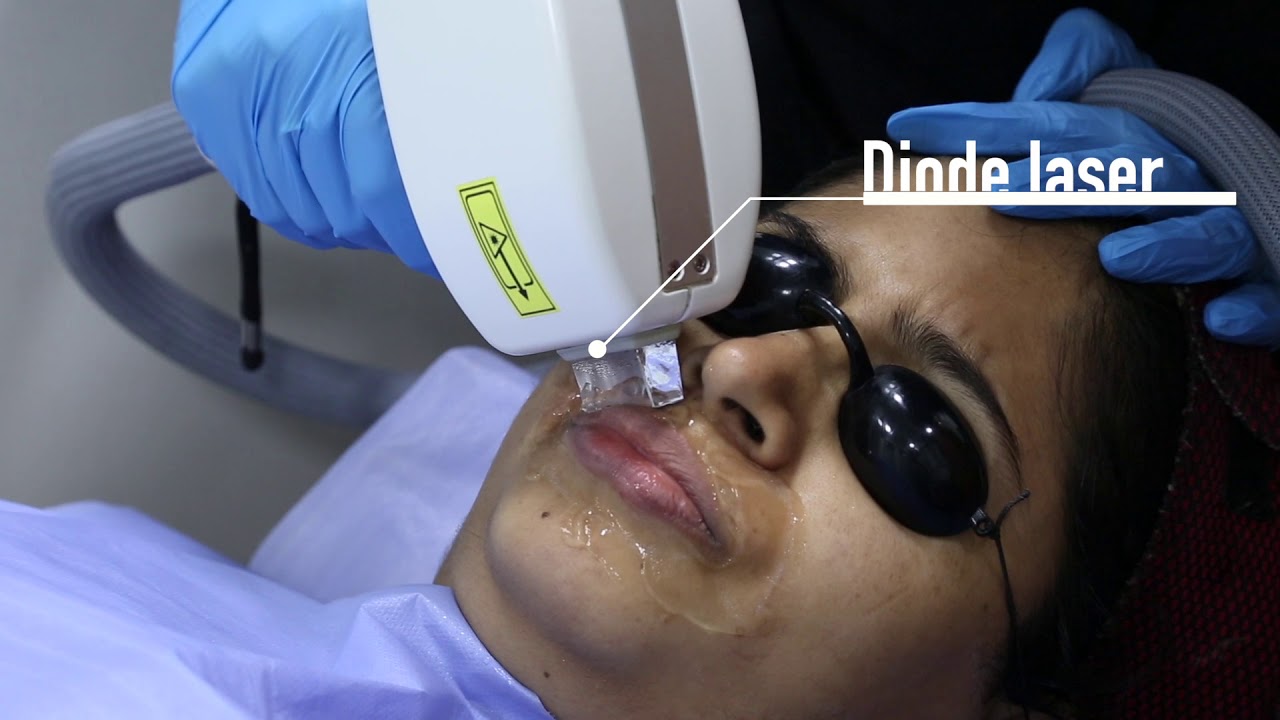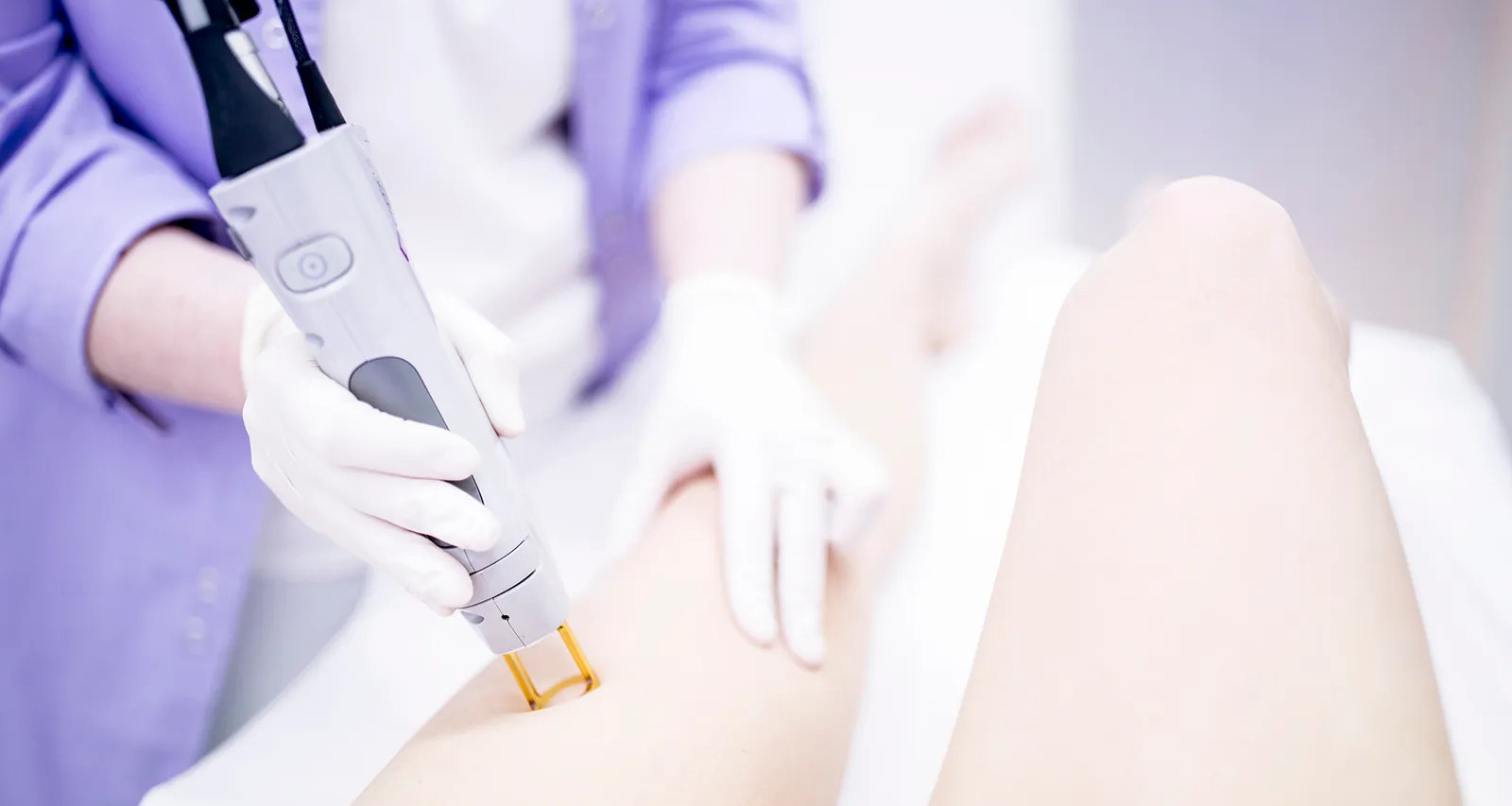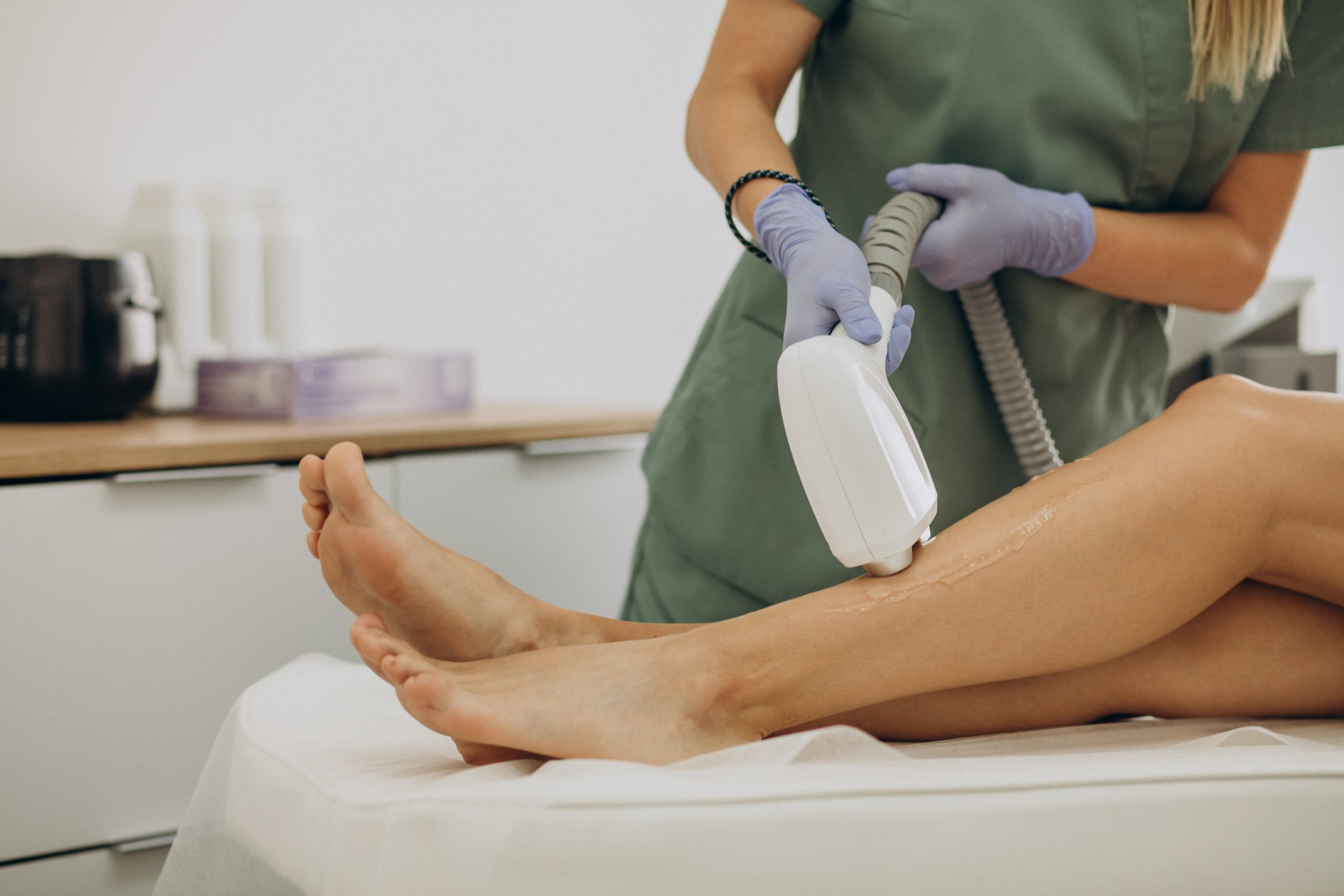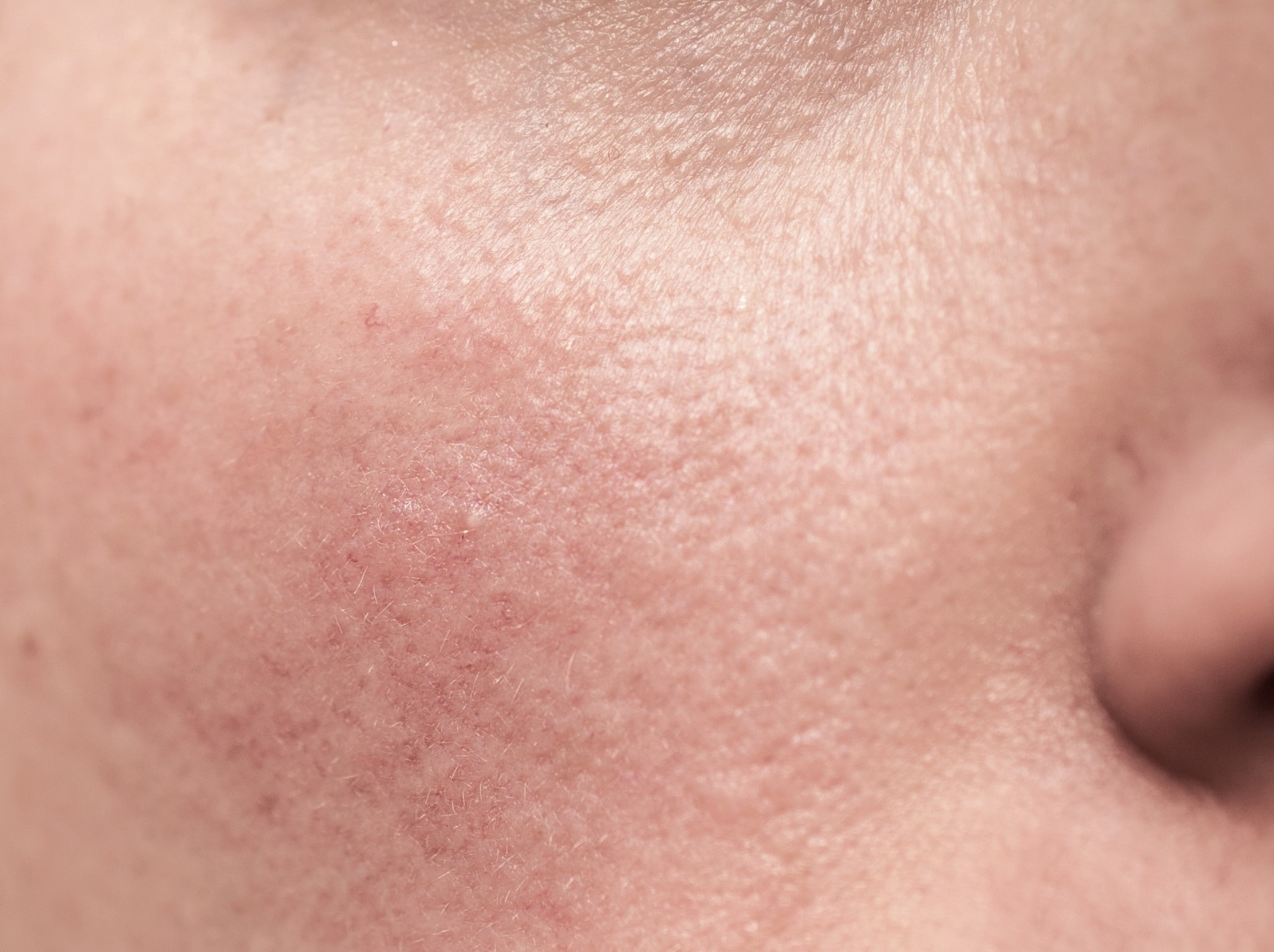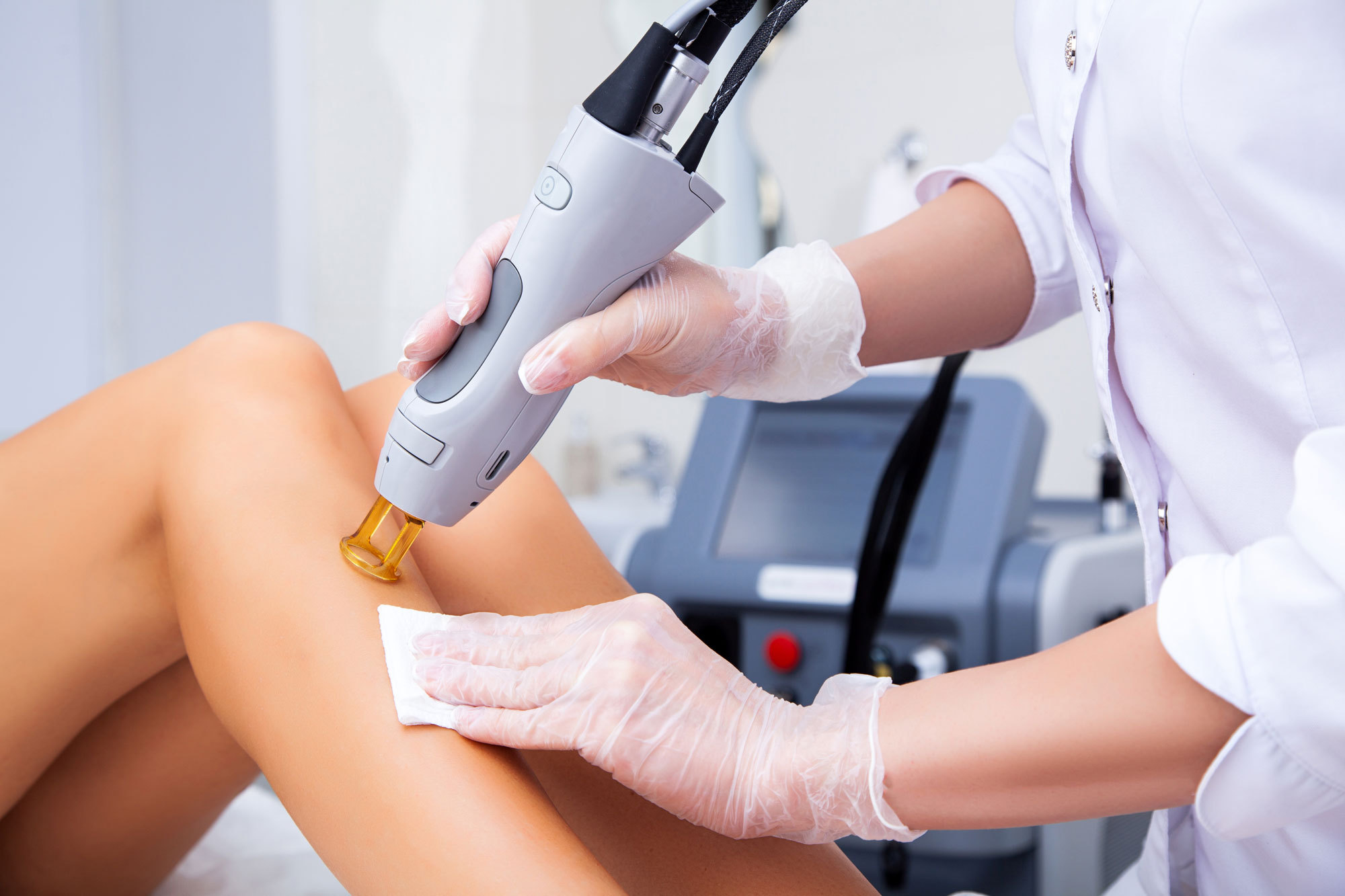Home>FAQs>What Happens If You Laser Hair Removal Over A Tattoo


FAQs
What Happens If You Laser Hair Removal Over A Tattoo
Modified: August 5, 2023
Discover the potential risks and considerations of undergoing laser hair removal on a tattoo. Learn about the possible effects and precautions to take. General questions answered!
(Many of the links in this article redirect to a specific reviewed product. Your purchase of these products through affiliate links helps to generate commission for Under-tec.com, at no extra cost. Learn more)
Table of Contents
- Introduction
- Understanding Laser Hair Removal
- Understanding Tattoos
- Potential Risks of Laser Hair Removal on Tattoos
- Changes to Tattoo Pigmentation
- Incomplete Hair Removal on Tattooed Areas
- Possible Skin Irritation or Burns
- Precautions for Laser Hair Removal on Tattoos
- Consultation with a Professional
- Conclusion
Introduction
Over the years, laser hair removal has become a popular and effective method for achieving smooth and hair-free skin. However, what happens if you have a tattoo and want to undergo laser hair removal in the same area? Can the laser treatment be safely performed over the tattooed skin? These are common questions that many individuals with tattoos may have when considering laser hair removal.
Laser hair removal works by targeting the dark pigment in hair follicles, using concentrated beams of light to destroy the hair follicles and inhibit further hair growth. On the other hand, tattoos are created using permanent ink that is injected into the skin to create decorative designs or symbols. So, it’s natural to wonder how laser treatment can affect tattooed skin.
In this article, we will explore the possible risks and considerations associated with performing laser hair removal over tattoos. We will delve into the potential changes to tattoo pigmentation, the possibility of incomplete hair removal over tattooed areas, as well as the risk of skin irritation or burns. By understanding these factors, you can make an informed decision about whether laser hair removal over a tattoo is the right choice for you.
Understanding Laser Hair Removal
Laser hair removal is a cosmetic procedure that targets unwanted hair follicles using concentrated beams of light. It is a non-invasive method that provides long-lasting results by damaging the hair follicles, which then inhibits future hair growth. The treatment is commonly performed on various areas of the body, including the legs, underarms, bikini line, and face.
During the laser hair removal process, a handheld device is used to emit the laser beams onto the skin. The light is absorbed by the pigment in the hair follicles, generating heat that destroys the follicles. The treated hairs will gradually fall out in the coming weeks, leaving the skin smoother and hair-free.
It is important to note that laser hair removal is most effective on individuals with light skin tones and dark hair. This is because the laser targets the pigment in the hair follicles, so the greater the contrast between the hair color and skin tone, the more effective the treatment will be. However, advancements in technology have made it possible to perform laser hair removal on individuals with darker skin tones as well.
Laser hair removal is known for its long-term results. It typically requires multiple sessions spaced several weeks apart to ensure that all hair follicles are effectively treated during their active growth phase. While some individuals may experience a significant reduction in hair growth after just a few sessions, others may require more treatments to achieve their desired results.
Overall, laser hair removal is considered a safe and effective method for long-term hair reduction. However, it is important to consult with a qualified professional who can assess your specific needs and ensure that you are a suitable candidate for the procedure.
Understanding Tattoos
Tattoos have been a form of self-expression and art for centuries. They involve permanently injecting ink into the dermis layer of the skin, creating intricate designs, symbols, or words that hold personal significance to the individual. Tattoos can be found on various parts of the body, ranging from small and discreet to large and elaborate.
The process of getting a tattoo involves a tattoo artist using a needle to puncture the skin and deposit ink into the deeper layers. The ink penetrates the epidermis and settles in the dermis, which results in a long-lasting design. The healing process typically takes a few weeks, during which the skin forms a protective layer over the tattoo, sealing in the ink and allowing it to stay embedded in the skin.
Tattoos can hold deep meaning and significance for individuals, representing important milestones, beliefs, or memories. They can also be purely aesthetic, chosen for their beauty and artistic value. Regardless of the reason for getting a tattoo, it is crucial to carefully consider the design, placement, and size to ensure that it aligns with personal preferences and considerations.
While tattoos are generally considered permanent, some individuals may choose to have them removed or altered. This can be done through laser tattoo removal, a process that uses lasers to break down the tattoo ink particles so that they can be naturally eliminated by the body’s immune system. However, the success of tattoo removal depends on factors such as ink color, tattoo size, and individual skin characteristics.
It is important to understand that tattoos are a form of body modification and should be approached with careful consideration. Before getting a tattoo, it is advisable to research reputable tattoo artists, discuss design ideas, and ensure proper aftercare to ensure a successful and satisfactory outcome.
Potential Risks of Laser Hair Removal on Tattoos
While laser hair removal is generally a safe and effective procedure, performing it over tattooed skin can present some potential risks and considerations. It is important to understand these risks before proceeding with laser hair removal on tattooed areas.
Changes to Tattoo Pigmentation: One of the main concerns with laser hair removal on tattoos is the potential for changes in the tattoo pigmentation. The laser used in hair removal targets the pigment in the hair follicles, but it can also unintentionally affect the pigmented ink in the tattoo. This can cause the colors to fade, distort, or even completely change, resulting in an altered appearance of the tattoo.
Incomplete Hair Removal on Tattooed Areas: Another risk is that laser hair removal may not be as effective on tattooed areas. The presence of a tattoo can create a barrier that prevents the laser from fully reaching and targeting the hair follicles. As a result, the hair removal process may be incomplete in these areas, leading to suboptimal results.
Possible Skin Irritation or Burns: The intense heat generated by the laser during hair removal can potentially cause skin irritation or burns. This risk is heightened when the laser is used over tattooed skin, as the ink can absorb and retain more heat than regular skin. It is crucial to have a skilled and experienced professional perform the treatment to minimize the risk of skin damage.
Precautions for Laser Hair Removal on Tattoos: If you are considering laser hair removal on tattooed areas, it is important to take precautions to minimize the potential risks involved. One crucial step is to consult with a qualified professional who has experience in treating tattooed skin. They will be able to assess the tattoo and determine the best approach to minimize any potential changes or damage.
Additionally, it is important to carefully follow the aftercare instructions provided by your laser hair removal provider. This may include avoiding direct sunlight, applying appropriate skincare products, and keeping the treated area clean and moisturized.
By understanding the potential risks and taking necessary precautions, you can make an informed decision about whether laser hair removal over a tattoo is the right choice for you. Remember to consult with a professional and discuss any concerns or questions you may have before proceeding with the treatment.
Changes to Tattoo Pigmentation
One of the primary concerns when considering laser hair removal on tattooed skin is the potential for changes to the pigmentation of the tattoo. Laser hair removal works by targeting the pigmented hair follicles, but it can also inadvertently affect the pigmented ink in the tattoo.
The laser used in hair removal emits a specific wavelength of light that is absorbed by the pigment in the hair follicles. However, tattoo inks contain various pigments that can absorb or reflect this light differently. This can result in the colors of the tattoo being affected or altered during the laser hair removal process.
In some cases, the laser can cause the tattoo pigments to fade, resulting in a lighter or less vibrant appearance. This can be particularly noticeable with darker ink colors, such as black or deep blues. On the other hand, certain pigments may absorb the laser energy and become heated, potentially leading to darkening or dark spots in the tattoo.
It is essential to note that the extent of these changes can vary greatly depending on several factors, including the individual’s skin type, tattoo location, ink colors used, and the type of laser being used for hair removal. Additionally, the experience and skill of the professional performing the treatment can significantly impact the outcome.
If you have a tattoo and are considering laser hair removal, it is crucial to discuss your concerns with a qualified professional. They can assess your tattoo, evaluate the pigments used, and provide recommendations based on their expertise. They may suggest adjusting the laser settings or using specific techniques to minimize the risk of pigment changes while still achieving effective hair removal.
Keep in mind that some changes to the tattoo pigmentation may be temporary, while others may be permanent. Lightening or fading of the tattoo can sometimes be corrected or enhanced through tattoo touch-ups or modifications. However, it is important to understand that there is no guarantee that the tattoo can be restored to its original appearance.
Prior to undergoing laser hair removal on tattooed skin, ensure that you have realistic expectations and fully understand the potential risks and potential changes that may occur to the tattoo pigmentation. Consulting with a knowledgeable professional can help you make an informed decision and determine the best course of action for your specific situation.
Incomplete Hair Removal on Tattooed Areas
When considering laser hair removal on tattooed skin, it is important to be aware that there is a potential for incomplete hair removal in the areas where the tattoo is present. This is primarily due to the presence of the tattoo itself, which can create a barrier between the laser and the hair follicles.
The laser used in hair removal works by targeting the pigment in the hair follicles. However, when the laser encounters a tattoo, the ink can absorb or scatter the laser light, making it more difficult for the laser to reach and effectively target the hair follicles beneath the tattooed skin. This can result in incomplete hair removal or a reduced level of effectiveness in those specific areas.
The extent of the incomplete hair removal can vary depending on factors such as the size, density, and colors of the tattoo, as well as the type of laser being used for the hair removal procedure. Larger and more densely tattooed areas tend to present more challenges for the laser to penetrate and reach the hair follicles.
It is important to manage expectations when it comes to laser hair removal on tattooed areas. While the treatment may significantly reduce hair growth in non-tattooed areas, it may be less effective or have limited results in the areas covered by the tattoo. It is not uncommon for individuals to opt for alternative hair removal methods, such as shaving or waxing, in those specific areas if complete hair removal cannot be achieved through laser treatment.
If you are considering laser hair removal on tattooed areas and are concerned about incomplete hair removal, it is vital to consult with a skilled professional before proceeding. An experienced practitioner will assess your tattoo and provide personalized advice on the best approach. They may suggest adjusting the laser settings, using different techniques, or recommending alternative hair removal methods for those specific areas.
Remember that laser hair removal can still be successful in the non-tattooed areas surrounding the tattoo, providing hair reduction and smooth skin. It is crucial to have realistic expectations and be aware of the limitations when it comes to hair removal over tattooed skin.
Possible Skin Irritation or Burns
Performing laser hair removal on tattooed skin carries an increased risk of skin irritation or burns compared to treating non-tattooed skin. The presence of a tattoo can impact the way the skin reacts to the laser’s heat, making it more susceptible to potential damage.
During laser hair removal, the laser emits concentrated beams of light that generate heat. This heat is absorbed by the pigment in the hair follicles, effectively destroying them. However, when the laser is applied over a tattoo, the ink can also absorb and retain more heat than regular skin. As a result, there is a higher risk of skin irritation or burns in tattooed areas.
The severity of the potential skin irritation or burns can vary depending on factors such as the density and colors of the tattoo, skin type, and the settings used on the laser device. Individuals with darker skin tones or sensitive skin may be more prone to experiencing adverse reactions during and after the laser hair removal treatment.
To minimize the risk of skin irritation or burns, it is essential to choose a qualified professional who has experience in performing laser hair removal on tattooed skin. They will have a thorough understanding of the appropriate settings and techniques to use, aiming to deliver effective hair removal while minimizing the risk of adverse skin reactions.
Prior to treatment, the practitioner will typically perform a patch test on a small area of the tattooed skin to assess how the skin reacts to the laser and to determine the appropriate settings for the procedure. This test helps to identify any potential adverse reactions and allows for adjustments to be made before treating the entire tattooed area.
Following the laser hair removal treatment, it is crucial to follow the recommended aftercare instructions provided by the professional. This may include applying soothing creams or ointments, avoiding direct sunlight or tanning beds, and refraining from activities that could irritate or damage the treated skin.
If you experience any signs of skin irritation, such as redness, swelling, blistering, or unusual discomfort, it is important to inform your practitioner immediately. They will be able to assess the situation, provide appropriate advice or treatment, and ensure proper healing of the skin.
Remember, the risk of skin irritation or burns can be significantly reduced by choosing a reputable professional with experience in treating tattooed skin and following their guidance throughout the laser hair removal process.
Precautions for Laser Hair Removal on Tattoos
When considering laser hair removal on tattooed skin, taking the necessary precautions is crucial to minimize potential risks and complications. Here are some important steps to follow to ensure a safe and successful laser hair removal treatment on tattooed areas:
Consultation with a Professional: It is essential to consult with a qualified professional who has experience in treating tattooed skin. They can evaluate your specific tattoo and determine the best approach for laser hair removal. During the consultation, be sure to discuss any concerns or questions you may have.
Assessment of Tattoo Characteristics: The tattoo’s size, colors, and location can impact the treatment. The professional will assess the pigments used in the tattoo and determine if any adjustments are needed to minimize potential changes to the tattoo pigmentation during the laser hair removal process.
Patch Test: Before the full treatment, a patch test may be performed on a small area of the tattooed skin to assess how the skin reacts to the laser. This helps determine the appropriate settings and assess any potential adverse reactions before proceeding with the entire treatment.
Selecting the Right Laser Technology: Not all laser devices are suitable for treating tattooed skin. It is important to ensure that the laser technology used is specifically intended for hair removal on tattooed areas. A professional with experience in treating tattooed skin can guide you in selecting the appropriate laser device.
Protective Measures: Before the laser hair removal treatment, the practitioner may apply a protective gel or cream over the tattooed area to help protect the skin and minimize the risk of burns or irritation. They may also use appropriate cooling methods to keep the skin comfortable during the procedure.
Follow Aftercare Instructions: Proper aftercare is crucial to promote healing and minimize complications. This may involve applying soothing creams or ointments to the treated area, avoiding direct sunlight or tanning beds, and refraining from activities that could irritate or damage the skin.
Monitor for Adverse Reactions: Keep an eye on the treated area for any signs of skin irritation, such as redness, swelling, blistering, or discomfort. If you experience any of these symptoms, inform your practitioner immediately for appropriate assessment and guidance.
Realistic Expectations: It is important to have realistic expectations when it comes to laser hair removal on tattooed skin. Understand that complete hair removal may be challenging in the tattooed areas, and there is a risk of changes to the tattoo pigmentation. Discuss these factors with your practitioner to set realistic goals and outcomes.
By following these precautions and working with a knowledgeable professional, you can ensure a safer and more effective laser hair removal experience on tattooed skin. Remember, your practitioner is there to guide you and address any concerns you may have throughout the process.
Consultation with a Professional
Getting a consultation with a qualified professional is an essential step when considering laser hair removal on tattooed skin. Consulting with an experienced practitioner will provide you with valuable information and guidance regarding the treatment, helping you make an informed decision about whether it is suitable for you.
During the consultation, the professional will assess your tattooed skin and discuss your specific goals and expectations. They will evaluate the characteristics of your tattoo, such as its size, colors, and location, to determine the potential risks and challenges associated with performing laser hair removal over the tattooed areas.
By examining the pigments used in your tattoo, the professional can have a better understanding of how the tattoo pigmentation may react to the laser treatment. This assessment will help them provide personalized advice and recommend appropriate precautions to minimize the risk of adverse effects or changes to the tattoo’s appearance.
This consultation also allows you to ask any questions or express concerns you may have about laser hair removal. You can inquire about the professional’s experience in treating tattooed skin and their success rates with similar cases. Discussing your specific situation will provide you with valuable insights and help you set realistic expectations for the treatment outcome.
Furthermore, a professional consultation gives you the opportunity to learn about the different types of lasers used for hair removal on tattooed areas. The practitioner can explain the benefits and limitations of each laser technology and guide you in selecting the most appropriate option for your specific tattoo and skin type.
It is important to feel comfortable and confident with the practitioner you choose. Take the time to research and read reviews about potential professionals to ensure they have the necessary qualifications and experience. A skilled and reliable professional will prioritize your safety, provide honest advice, and tailor the treatment plan to your individual needs and goals.
Remember that the consultation is a two-way communication process. Be open and honest about your expectations, concerns, and any relevant medical history. This will enable the professional to provide you with the best possible care and ensure the treatment is tailored to your specific circumstances.
Ultimately, a consultation with a professional is a crucial step in the laser hair removal process. It allows you to gather important information, get personalized recommendations, and establish a relationship with a trusted practitioner. With the guidance and expertise of a qualified professional, you can make a well-informed decision about laser hair removal on tattooed skin and ensure the best possible outcome for your unique situation.
Conclusion
Deciding whether to undergo laser hair removal on tattooed skin requires careful consideration and understanding of the potential risks and implications. While laser hair removal is generally a safe and effective procedure, there are specific concerns to keep in mind when treating tattooed areas.
Laser hair removal on tattooed skin can result in changes to the tattoo pigmentation, incomplete hair removal, and increased risk of skin irritation or burns. These risks are influenced by factors such as the tattoo characteristics, laser technology used, and the expertise of the professional performing the treatment.
To minimize these risks, it is crucial to consult with a qualified professional who has experience in treating tattooed skin. They can assess your tattoo, evaluate the potential impact of the laser treatment, and provide tailored advice and precautions to ensure the best possible outcome.
During the consultation, discuss your expectations, concerns, and any relevant medical history with the practitioner. This will help them provide personalized recommendations and set realistic expectations for the treatment outcome.
It is also essential to follow the aftercare instructions provided by the professional to promote healing and minimize complications. This may include using specialized skincare products, avoiding direct sunlight, and refraining from activities that could irritate or damage the treated skin.
While laser hair removal on tattooed skin may present some challenges, it can still be a viable option for hair reduction in non-tattooed areas surrounding the tattoo. By understanding the potential risks and taking the necessary precautions, you can make an informed decision about whether laser hair removal on tattooed skin is the right choice for you.
Remember that the key to a successful laser hair removal treatment on tattooed skin lies in collaboration with a skilled professional who has extensive experience in treating such cases. Through thorough assessment, personalized advice, and careful treatment planning, you can achieve effective hair reduction while minimizing potential unwanted effects on your tattoo.
If you are considering laser hair removal on tattooed areas, consult with a reputable practitioner to discuss your options and ensure your safety and satisfaction throughout the process. With proper care and guidance, you can achieve desired results and enjoy smooth, hair-free skin without compromising the beauty and integrity of your tattoo.
